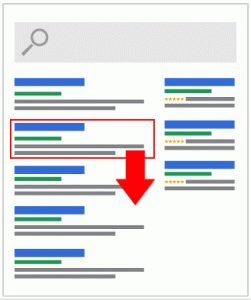After a lot of hype, Google rolled out Penguin 2.0 last week. Since then, the web has been inundated with expert opinions on the topic. Some of the commentary has been helpful, some has been dramatic and some has spread misinformation on the subject.
Found has created a Penguin 2.0 cheat sheet to help you understand the basics:
What is Penguin 2.0?
Penguin 2.0 is the latest Google algorithm change.
Wait, what do you mean by algorithm?
In its most basic form, an algorithm is a procedure for solving a mathematical problem. Google takes the words and phrases you type into its search bar as a problem that needs solving. Their algorithms are in the form of computer programs, which use processes and formulas to provide you, the user, with the answer to your search question.
By relying on more than 200 unique clues and signals, such as the terms on websites, the freshness of content and backlinks, as well as personalised factors such as your search history, location and device, Google provides its “best guess” set of websites for your search query.
What is the update designed to do?
 The main purpose of Penguin 2.0 is to target spam on the web and decrease the rankings of websites that the algorithms suspect violate Google’s existing quality guidelines. The update moves past targeting only the top level pages and begins to target lower level pages of a site.
The main purpose of Penguin 2.0 is to target spam on the web and decrease the rankings of websites that the algorithms suspect violate Google’s existing quality guidelines. The update moves past targeting only the top level pages and begins to target lower level pages of a site.
For the normal guy, the removal of webspam enables Google to more effectively help searchers find the sites, and answers they are looking for and results in a strong user experience.
What about webmasters?
The intention is to have high-quality sites rewarded. When Google announced the update, they said that their advice for webmasters is “to focus on creating high-quality sites that create a good user experience and employ white hat SEO methods instead of engaging in aggressive webspam tactics.”
Of course, this is intended to lower the rankings of sites Google believes are engaging in improper optimisation methods.
White hat vs. black hat
White hat refers to SEO techniques that effectively and properly improve a site’s usability. This can be through strong content, faster load times and natural linking to your site. These factors provide users with an enjoyable and effective experience.
Black hat is the opposite of this. It refers to the improper techniques that are used to increase rankings or traffic in a way Google dislikes. This can be things like keyword stuffing, hacking websites, using hidden content and link schemes which increase traffic and rankings, but do not benefit the user.
Is Penguin a penalty?
A penalty assumes you did something wrong and now are being punished. Penguin 2.0 is an algorithm update, which means that if your rankings have slipped it is likely that links which may have been helping you previously, are no longer effective.
So if my rankings are falling, it means I have been Penguined?
 Maybe, maybe not.
Maybe, maybe not.
Not all fallen rankings can be attributed to Penguin 2.0. Most companies and brands are employing a form of SEO. Competition is strong and your rankings can be diminishing simply because others are working just as hard to get their sites in top placement.
However, as mentioned above, some of the links that used to increase your rankings, are no longer doing so. This is because a couple of weeks ago, Google took action against a large network of link sellers. All their outgoing links were devalued accordingly.
The result is that some brands and websites will need to write off the investment made in low quality links and start from scratch – building a SEO strategy fit for 2013 and beyond. This will involve using a more natural SEO strategy and focusing on attracting higher quality links. This is similar to the fate faced by some websites and brands with the release of the original Penguin.
What is the original Penguin?
An original Penguin was released in April 2012. It was followed by several smaller updates under the same title. The goal of the algorithm was the same – penalise the sites that employ black hat techniques and reward the high-quality sites.
According to Matt Cutts, head of Google’s Webspam team, there are some 500 algorithm updates a year. Moving forward, Penguin will likely have a lower threshold level in future. Most changes are minor but others, like Penguin, are highly discussed due to the impact or intended impact it will have on rankings.
Why are some people freaking out?
This was due in part to the fact that the update received a lot of hype and people were expecting a lot of backlash. Cutts’ video below most likely had a large role to play in why people were worried.
As of the publication date of this article, the update has been mostly underwhelming. Spam sites are still ranking and some legitimate websites have been penalised. To tackle the spam still ranking, Google has made it possible for webmasters to submit linkspam reports themselves.
Regardless of low impact Penguin 2.0 has had so far, it is still important to make sure your SEO team is employing the proper techniques to improve your ranking.
5 questions to ask yourself and your SEO team:
1. Are the sites linking back to my site reputable?
Proper backlink profile analysis should be conducted by any SEO agency worth their salt. There are several software platforms where you can grab your links, including Majestic SEO, Ahrefs and Moz. It is also possible to do this through Google Webmaster Tools.
The next stage is to verify which of these links are relevant, natural and are from sites of a sufficient quality to be associated with your brand/website. If they don’t meet these standards, get rid of them.
2. Is the content we are posting amazing and compelling?
Your content should be authoritative within your niche. You should always aim to inform the reader, solve their problems and provide a great and effective user experience.
3. Are we doing link building properly?
Link building has a bad rep, and rightly so. Shoddy and lazy SEOs spend too long chasing the algorithm; obtaining backlinks through ‘grey hat’ techniques.
When done properly, link building is still a vital component of a digital marketing strategy. This can be done by building relevant links for traffic value rather than direct ranking benefit. Another way is through outreach to relevant hubs of authority or online PR.
SEO teams just need to be better than ever before.
4. Are all my eggs in one basket?
Employing a reputable agency is important for two main reasons. The first is that they will create a strong SEO strategy, second, a good team will be able to advise you on other forms of digital marketing needed to make your website thrive. If you put all your resources in organic traffic, you will end up with a very poor business model because when it comes to Google, you don’t have any divine rights to appearing in a search engine results page (SERP).
Make sure you are diversifying your traffic sources on and offline.
5. Do we have a long-term plan?
While it is tempting to focus on the right now, make sure your team isn’t employing quick fixes. They should be using a strategy that will continue to pay off even after Google’s next algorithm update.
As Cutts stresses, the goal is to create a site users love, that they will want to tell their friends about, that they will bookmark, come back to, visit over and over again – all the things that make a site compelling. These kinds of sites are likely to build links organically due to the fact people want to share them.
With notes from Daniel Locke.


